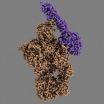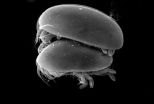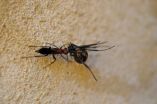(Press-News.org) Chemicals or foods that raise estrogen levels during pregnancy may increase cancer risk in daughters, granddaughters, and even great-granddaughters, according to scientists from Virginia Tech and Georgetown University.
Pregnant rats on a diet supplemented with synthetic estrogen or with fat, which increases estrogen levels, produce ensuing generations of daughters that appear to be healthy, but harbor a greater than normal risk for mammary cancer, the researchers report in today's Nature Communications.
Although the findings have not yet been validated in humans, the study shows that environmental damage may be passed from one generation to the next not through genetic mutations, but through "epigenetic" alterations that influence how genomic information is decoded.
The research also raises hope that people who may be especially sensitive to carcinogens can be identified and novel prevention strategies can be employed before cancer strikes.
"We have shown for the first time that altered DNA methylations modulated by specific diet in normal development are heritable and transgenerational," said Yue "Joseph" Wang, the Grant A. Dove Professor of Electrical and Computer Engineering at Virginia Tech Research Center – Arlington. "We also identified key methylation alteration sites that may be involved or responsible for increased breast cancer risk, which may serve as novel biomarkers for scientists to develop novel and targeted prevention strategies."
The National Cancer Institute estimates that more than 226,000 women and more than 2,000 men will develop breast cancer in 2012, and nearly 40,000 people will die of the disease.
Two thirds of breast cancers that occur in families have no known genetic cause, according to Leena Hilakivi-Clarke, a professor of oncology at Georgetown Lombardi Comprehensive Cancer Center. The study shows what may be underlying the cancer are not genetic mutations, but inherited effects of maternal intake of high-fat diets and exposure to excess estrogen during pregnancy.
"It is becoming clear that the process of epigenetic signaling — which genes are expressed and which genes are silenced — is being affected by a mother's hormonal environment during pregnancy," said Hilakivi-Clarke, who has studied the effects of maternal diet on offspring in animals and humans for more than 20 years. "The early studies indicate in a normal pregnancy a woman may have more than 20 different estrogen levels, and the highest and the lowest all result in a healthy baby. The challenge has been to understand how something in fetal development can affect breast cancer risk more than 50 years later."
The study was led by Sonia de Assis, a postdoctoral researcher in Hilakivi-Clarke's laboratory at the Georgetown Lombardi Comprehensive Cancer Center at Georgetown University Medical Center.
Virginia Tech researchers developed mathematical models and machine-learning techniques to analyze the changes in DNA methylation status in the descending daughters to understand how increased cancer risk is transmitted without genetic mutation.
DNA methylation is a key process in normal development, allowing cells with the same genome to perform different functions by adding chemical groups to DNA to turn some genes on and some genes off.
Wang's group found that the descendants with increased risk had several hundred common DNA regions that were methylated differently than in a control group, providing statistically convincing evidence that breast cancer risk can be transmitted via epigenetic means.
"Ultimately, it may be possible to undo or prevent this harmful methylation and decrease the risk of breast cancer." Wang said. "A next step will be to study the timing of the intervention and the impacts of the methylation as it occurs in the early, middle or end of the pregnancy. The promising news is pharmacologic or other interventions may be able to reverse the harmful exposure."
INFORMATION:
This study was supported by the American Cancer Society (116602-PF-09-018-01-CNE) and the National Institutes of Health including the National Cancer Institute (R03 CA150040, RO1 CA069065, U54 CA100970, U54CA149147, P30 CA051668 and P30 CA054174), the National Institute of Environmental Sciences (RO1 ES017594), and the National Institute of General Medical Sciences (R21 GM085665).
END
The BP oil disaster in the Gulf of Mexico 2010 could have been avoided if the experiences of earlier disasters had been put to use, researcher Charles Woolfson, Linköping university, claims. The United States government is now accusing BP of gross negligence and deliberate misconduct, and taking the company to court.
On April 20, 2010, the Deepwater Horizon oil rig exploded in the ocean south of the southern coast of the US. The explosion led to the deaths of eleven people and an unfathomable environmental catastrophe.
Charles Woolfson, former professor of Labour Sociology ...
Serious gaming can be used to enhance surgical skills, but games developed or used to train medical professionals need to be validated before they are integrated into teaching methods, according to a paper in the October issue of the surgical journal BJS.
Researchers from The Netherlands reviewed 25 research studies covering 30 serious games published between 1995 and 2012.
"Many medical professionals may still have a rather out-dated view of the average gamer as being someone who is too young to vote, afraid of daylight and busy killing mystical dwarves in their parent's ...
VIDEO:
The animation shows how the MASP-2 (blue) attaches itself to the complement protein C4 (orange), and the structural rearrangements that occur in the C4 due to this. Note that although...
Click here for more information.
The complement system is part of the innate immune system and is composed of about 40 different proteins that work together to defend the body against disease-causing microorganisms. The complement system perceives danger signals in the body by recognising ...
This press release is available in German.
In the wake of the terrorist attacks of September 11, 2001, many Americans started driving more due to a fear of flying – and lost their lives in traffic accidents. But why did this happen more frequently in some states than in others? And why didn't Spanish driving habits change in the same way following the 2004 train bombings in Madrid? Wolfgang Gaissmaier and Gerd Gigerenzer from the Harding Center for Risk Literacy at the Max Planck Institute for Human Development in Berlin present new findings on this topic in the ...
"The most important thing for us is to raise awareness of the dangers of artificial light at night and we have already come a long way now that the American Medical Association (AMA) recently announced its new policy recognizing adverse health effects of exposure to light at night and encouraging further research into the matter," said Prof. Abraham Haim, a leading authority on light pollution, who coordinated the 21st International Congress of Zoology (ICZ) that was held last week at the University of Haifa, Israel.
The panel of world experts discussed "Light Pollution ...
Researchers from North Carolina State University have developed a new method for forecasting seasonal hurricane activity that is 15 percent more accurate than previous techniques.
"This approach should give policymakers more reliable information than current state-of-the-art methods," says Dr. Nagiza Samatova, an associate professor of computer science at NC State and co-author of a paper describing the work. "This will hopefully give them more confidence in planning for the hurricane season."
Conventional models used to predict seasonal hurricane activity rely on classical ...
The small ostracod Ankylocythere sinuosa measures no more than half a millimetre in length and lives on other crayfish. And, Spanish scientists have discovered it for the first time in Europe. The finding suggests that it arrived along with the invader crayfish Procambarus clarkii some 30 years ago but it is still unknown whether it can invade other crustacean species or whether it benefits or damages the expansion of the already established red swamp crayfish.
The red swamp crayfish (Procambarus clarkii) originates from the USA and Mexico and has been present in the Iberian ...
Electronic Jewelry for Health
Bracelets and amulets are in the works at Dartmouth's Institute for Security, Technology, and Society (ISTS). Rather than items of mere adornment, the scientists and engineers are constructing personal mobile health (mHealth) devices—highly functional jewelry, as it were.
mHealth is a rapidly growing field where technology helps you or your physician monitor your health through mobile devices. This approach can offer more accurate and timely diagnoses as well as lower health costs. However, smartphones are often used to transmit collected ...
University of Adelaide researchers say a small wasp that scientists had forgotten about for more than 200 years is now making a name for itself – as a predator of Australia's most common dangerous spider, the redback.
The wasp (Agenioideus nigricornis) was first described scientifically in 1775 by Danish entomologist Johan Christian Fabricius, thanks to samples collected in Australia during Captain Cook's first great voyage (1768).
"Since then, scientists have largely forgotten about the wasp," says Professor Andy Austin from the University of Adelaide's Australian ...
Scientists at The University of Nottingham say adverse side-effects caused by the anti-parasitic drug quinine in the treatment of malaria could be controlled by what we eat.
The research, carried out by Nottingham scientists on the University's campuses in the UK and Malaysia, indicates that natural variation in our levels of the amino acid, tryptophan, has a marked bearing on how we respond to quinine treatment. It appears that the lower our levels of tryptophan the more likely it is that we would suffer side-effects. And because tryptophan is an essential amino acid ...




